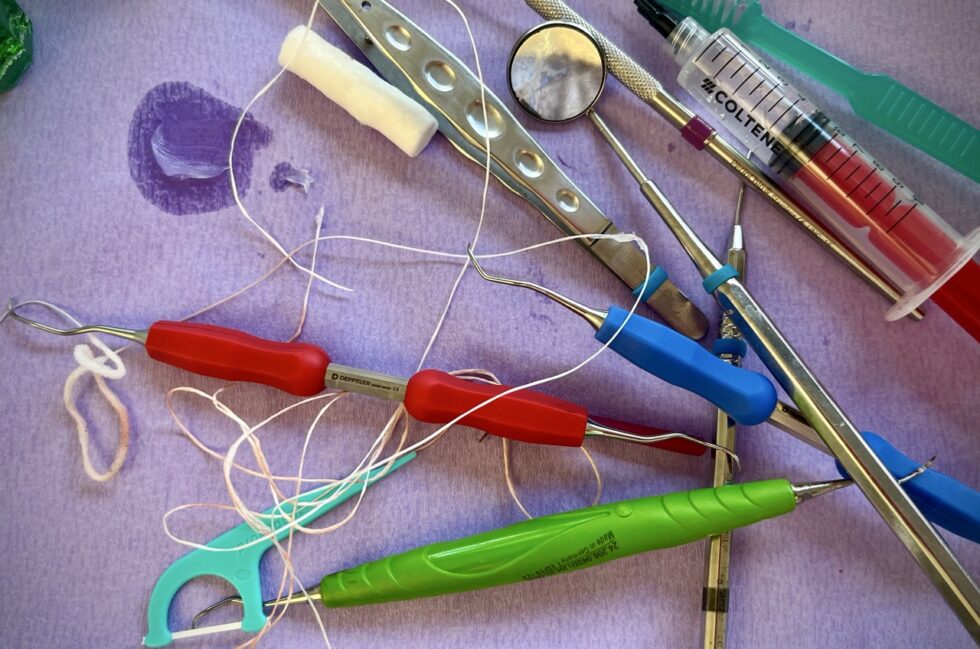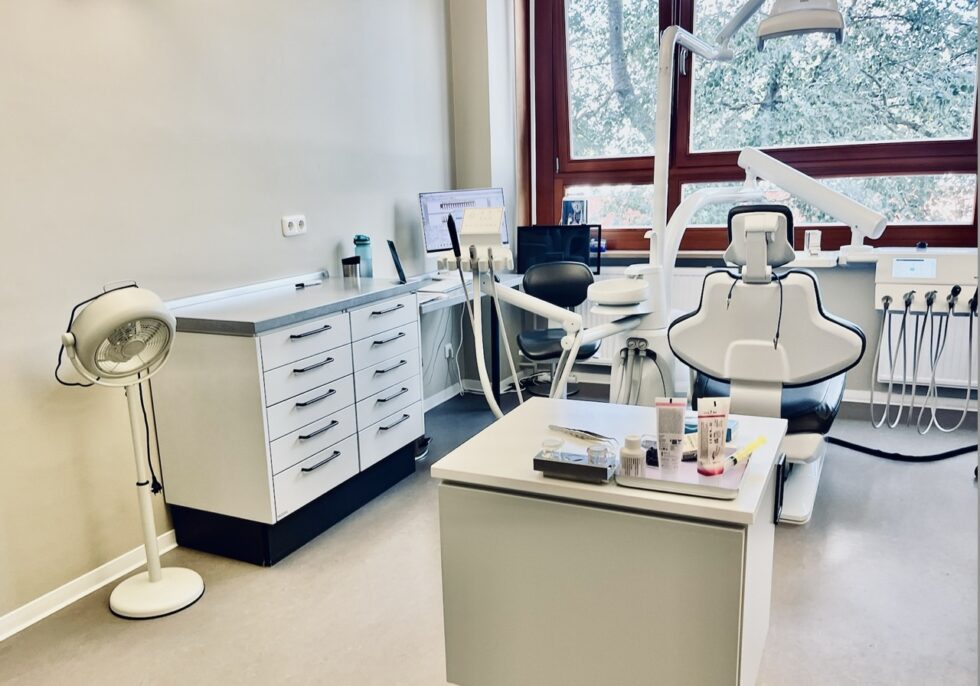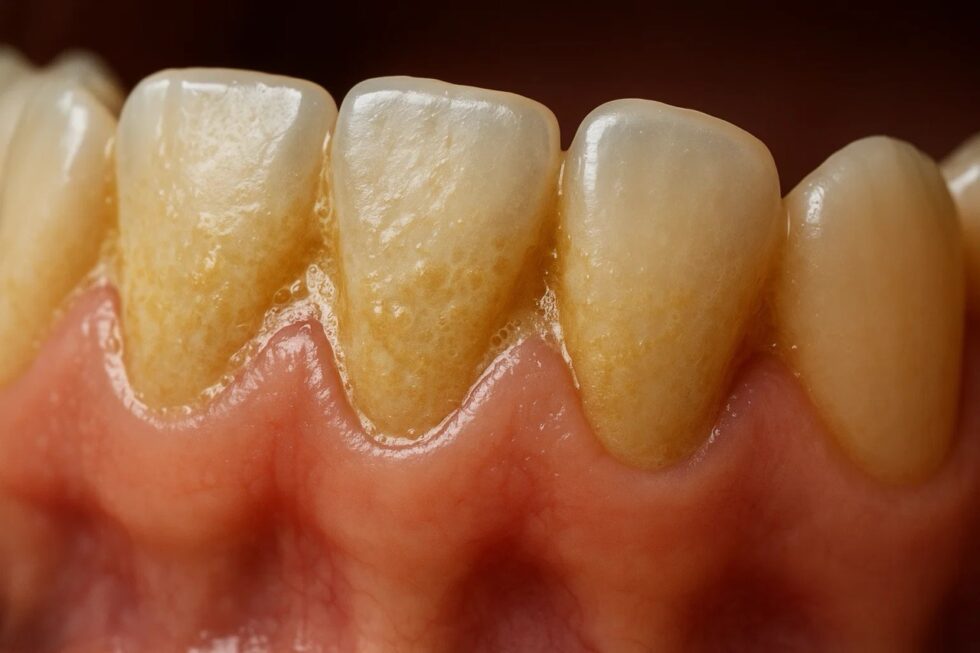What Is Dental Plaque (Biofilm) and How Does It Lead to Periodontitis

Dental plaque (biofilm) is the invisible layer of bacteria that forms on teeth every day and is considered the main cause of periodontal disease. In Germany, according to recent data from the Federal Dental Association, around 70–80 percent of adults suffer from diseases of the periodontal apparatus. Periodontitis, often called “parodontosis” in everyday language, is now one of the most common chronic conditions. Studies show that one in two adults over the age of 35 already has signs of gum inflammation, while among those over 60, almost two thirds are affected. This development shows that it is not only a cosmetic issue but a serious public health disease with systemic consequences – including cardiovascular disease and diabetes. The cause is almost always untreated dental plaque (biofilm), which, if ignored, can lead to severe damage. This was reported by G.business.

Why does dental plaque (biofilm) form
Dental plaque (biofilm) is created by the natural combination of bacteria, saliva, and food particles. It develops within hours after brushing and adheres tightly to the tooth surface. If not removed regularly, it hardens into tartar. This process is the main cause of tooth decay and gum disease.
Tips to prevent dental plaque (biofilm):
- Brush your teeth at least twice a day.
- Use fluoride toothpaste.
- Clean interdental spaces with floss or brushes daily.
- Drink plenty of water to stimulate saliva flow.
- Prefer a low-sugar diet.
Consistent oral hygiene is the only way to keep dental plaque (biofilm) under control.
What role does dental plaque (biofilm) play in periodontitis
Periodontitis is a chronic inflammation of the supporting structures of the teeth. Bacteria in dental plaque (biofilm) release toxins that irritate the gums and weaken the tissue. At first, bleeding gums appear, followed by gum pockets and bone loss. If untreated, this can lead to tooth loss.
Major risk factors:
- Poor oral hygiene and persistent plaque
- Smoking and alcohol
- Diabetes mellitus
- Genetic predisposition
- Stress and weakened immune system
The longer dental plaque (biofilm) remains, the higher the risk of developing periodontitis.
What are the first signs of periodontitis

The disease often progresses silently without pain. Early warning signs are frequently overlooked, yet early detection is critical. Typical symptoms include bleeding gums during brushing or eating, swelling, and bad breath. Later, the gums recede, teeth appear longer and become loose.
Typical symptoms:
- Gum bleeding during brushing or chewing
- Redness and swelling of the gums
- Persistent bad breath despite cleaning
- Gum recession
- Loose teeth
Acting early can prevent serious damage and tooth loss.
Are home remedies useful – and which are not
Many people try natural remedies to relieve gum inflammation. Rinses with salt or chamomile and oil pulling with coconut or sesame oil can have mild antibacterial effects. Green tea is rich in antioxidants and may help stabilize the oral microbiome. But home remedies can only support, not replace, brushing and professional treatment.
Helpful remedies:
- Chamomile or saltwater rinses
- Oil pulling with coconut or sesame oil
- Green tea for oral health
- Aloe vera gel for gum relief
- Gentle gum massage
Not recommended:
- Baking soda (damages enamel)
- Vinegar rinses (erode enamel)
- Herbal teas without brushing effect
- Aggressive mouth rinses in long-term use
They may ease discomfort but do not solve the root problem.
Everyday lifehacks to reduce dental plaque (biofilm)
Besides brushing, small routines can help limit dental plaque (biofilm) formation. Chewing sugar-free gum after meals stimulates saliva and neutralizes acids. Carrying small mouth rinses helps after snacks or coffee. Flossing before brushing improves cleaning. Even reminders via apps can improve habits.
Useful lifehacks:
- Drink water or chew gum after meals
- Keep interdental brushes handy
- Floss before brushing
- Use a tongue scraper
- Replace your toothbrush every 2–3 months
Small habits can make oral care more effective.
How much does professional cleaning cost in Germany
A professional dental cleaning in Germany usually costs between €80 and €150, depending on the practice and treatment scope. Public health insurance does not cover it by default but many funds offer annual subsidies of €40–120. Some insurers like BIG direkt gesund pay €75 twice a year, while AOK Bayern covers up to €100 annually. Certain funds (e.g., BKK24, hkk) even offer free cleanings at partner dentists. Private insurance or dental supplemental plans often cover the costs fully.
How to protect teeth in the long run
Long-term protection requires consistent prevention. This means daily oral hygiene, healthy nutrition, and regular dental check-ups. Avoiding sugar and nicotine and drinking enough water further support gum health. Professional cleanings twice a year are particularly important.
Long-term protective measures:
- Brush daily with fluoride toothpaste
- Floss or use interdental brushes
- Semi-annual dental check-ups and professional cleaning
- Low-sugar diet, plenty of water, tooth-friendly snacks
- Avoid smoking and maintain a healthy lifestyle
This way, dental plaque (biofilm), periodontitis, and tooth loss can be effectively prevented. Dental plaque (biofilm) is the invisible enemy in the mouth – only consistent care and professional support can secure oral health in the long term.
Stay connected for news that works — timely, factual, and free from opinion — and insights that matter now: Why 18.5 Million Germans Choose Dental Supplementary Insurance for Better Care